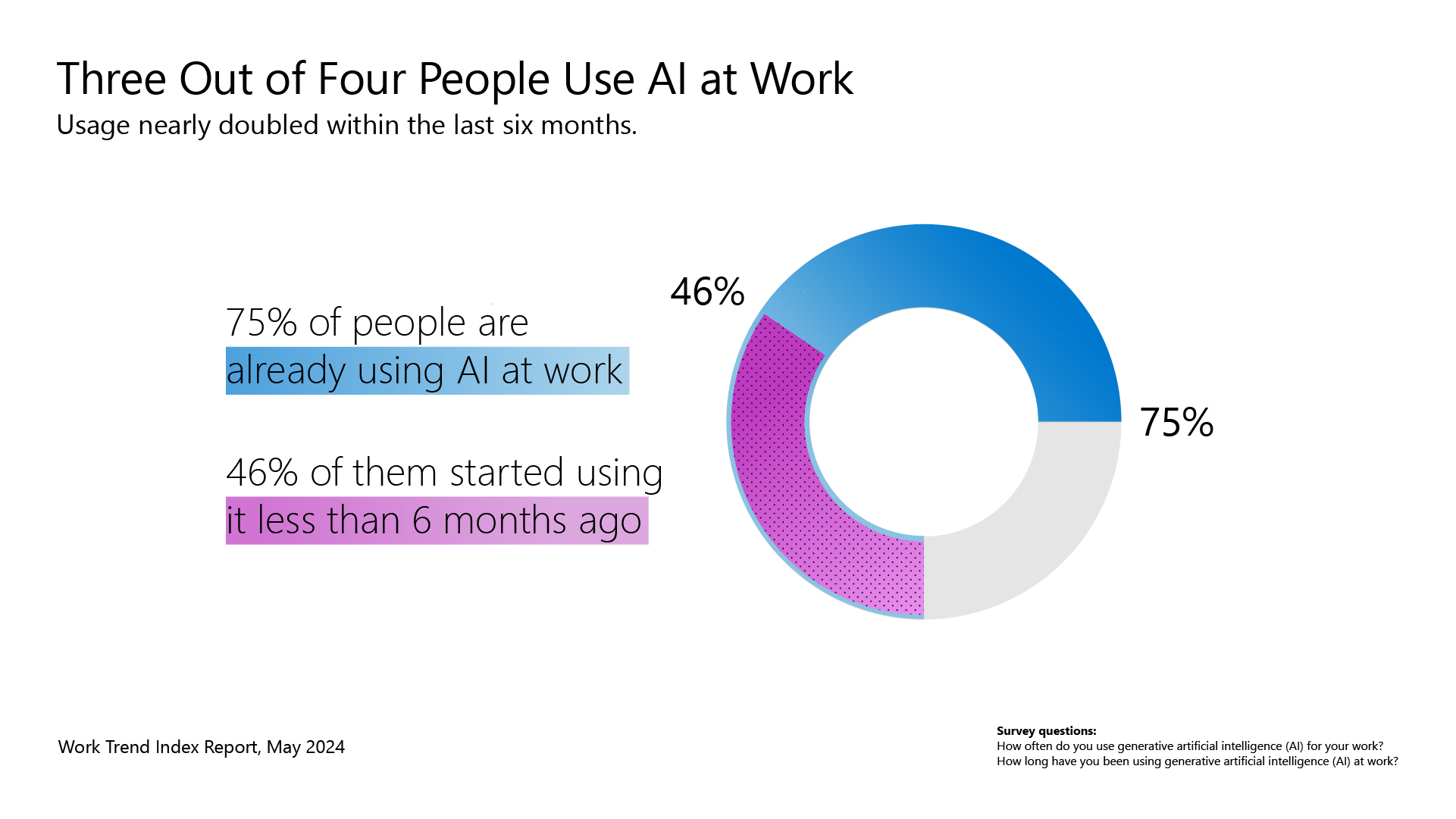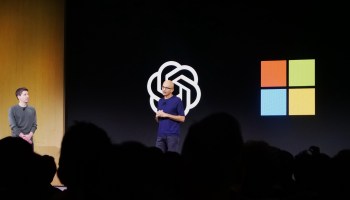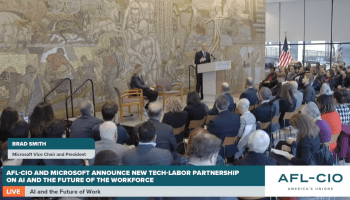
Microsoft released a new version of a study that has documented the transformation of work over the past few years, from the implications of remote and hybrid work to the rise of artificial intelligence in the workplace.
Among the findings this year: AI usage has nearly doubled in the past six months, reaching 75% of knowledge workers, according to Microsoft’s annual Work Trend Index. The study is based on a survey of 31,000 people in 31 countries, in addition to Microsoft 365 usage, LinkedIn data, and research conducted with big companies.
The report, released Wednesday morning, presents an optimistic view about the impact of AI on productivity and efficiency, as one might expect from a company betting much of its future on AI adoption by knowledge workers.
AI “power users” are saving more than 30 minutes a day, according to the study, which supports the company’s past promise that AI would reduce the drudgery of everyday work.
Many of those using AI (about 78%) are adopting AI tools on their own, in a trend described in the report as “Bring Your Own AI,” or BYOAI. This finding also plays into Microsoft’s hands, as the tech giant seeks to upsell its business customers on the notion of adding premium AI capabilities to their existing software licenses.
In allowing BYOAI to happen, companies risk “missing out on the benefits that come from strategic AI use at scale and putting company data at risk,” Microsoft says in a summary of the study.
From the perspective of software vendors, it’s reminiscent of the “Bring Your Own Device” trend that rattled corporate IT departments in the early heyday of smartphone adoption, and the grassroots adoption of collaboration tools that spurred corporate decision-makers to sign up for companywide subscriptions.
With the release of the study, Microsoft announced new features for Copilot for Microsoft 365, its flagship AI tool for work, which the company is selling for $30/user per month as an add-on to enterprise licensing packages.
- One new feature offers to autocomplete AI prompts as a user is typing them, and another can rewrite prompts to make them more effective.
- A new chat interface called “Catch Up” offers suggestions about upcoming meetings and other information and insights from user activity.
- An upcoming feature will allow teams to create, publish, and manage the AI prompts that they use, sharing them with other members of their team.
AI is also changing the job market, according to data from LinkedIn, the Microsoft-owned business social network. The number of people adding AI skills to their profiles has risen significantly, and job posts that mention AI have seen a 17% increase in the number of applications they receive, the LinkedIn data show.
More than 45% of respondents globally said they were considering quitting their jobs in the coming year, which the company called the highest percentage since the “Great Reshuffle” of 2021.



